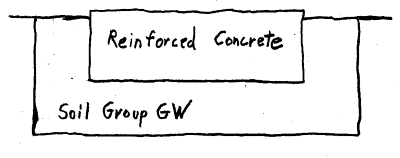enriko12
Industrial
- Sep 5, 2020
- 54
We are building a vibration isolated slab for sensitive scientific equipment. After reviewing a lot of literature, I see that anywhere between 1 ft to 8 ft of engineering fill were used, sometimes geo-textile fabric was also mentioned, but no details. I feel like its more of an art than a true science and would love to get some opinions on what would make sense and what would be a questionable investment.
So basically we are pouring a 12x12 ft slab, 4ft thick. Idea is to keep low frequency vibrations to the minimum. Equipment will be further installed on pneumatic vibration isolators, so that will take care of higher frequencies fairly well. Soil on site is some sort of clay with traces of organics. Main source of random vibrations is local road with occasional truck traffic, approximately 140 ft away. Also some mechanical equipment (e.g. chiller, rotary air compressor) is supposed to be installed as close as 20ft away. I planned on putting those on springs insulators and on a dedicated 12" thick slab
Would it make sense to excavate an additional 4 to 6 ft and fill with compacted gravel, geo-fabric, etc, or 1 ft of gravel would be just as good enough? Would gravel be the best material to use for the fill?
So basically we are pouring a 12x12 ft slab, 4ft thick. Idea is to keep low frequency vibrations to the minimum. Equipment will be further installed on pneumatic vibration isolators, so that will take care of higher frequencies fairly well. Soil on site is some sort of clay with traces of organics. Main source of random vibrations is local road with occasional truck traffic, approximately 140 ft away. Also some mechanical equipment (e.g. chiller, rotary air compressor) is supposed to be installed as close as 20ft away. I planned on putting those on springs insulators and on a dedicated 12" thick slab
Would it make sense to excavate an additional 4 to 6 ft and fill with compacted gravel, geo-fabric, etc, or 1 ft of gravel would be just as good enough? Would gravel be the best material to use for the fill?


![[idea] [idea] [idea]](/data/assets/smilies/idea.gif)

